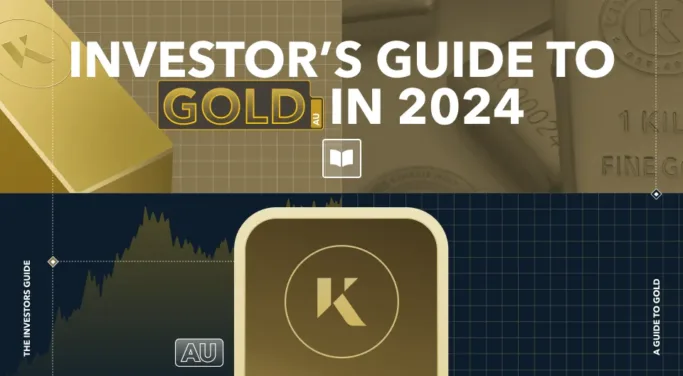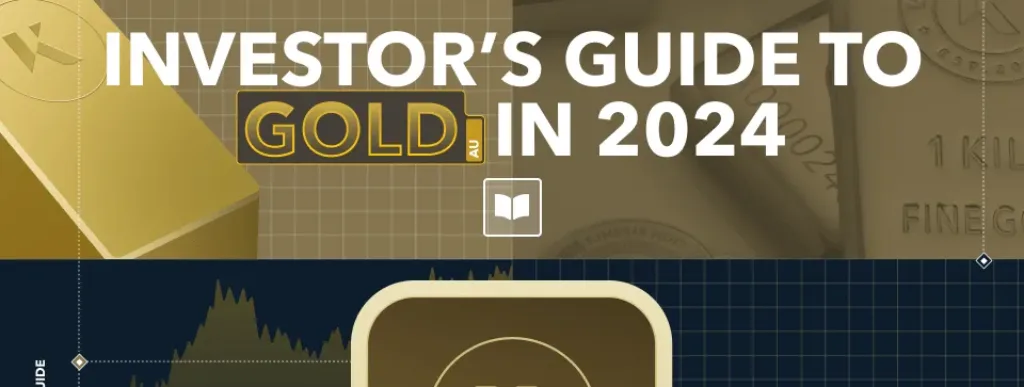What will be the main market drivers moving the gold price this year? And why is bullion still so crucial in a financial portfolio?
In this article, we will analyse these topics, focusing on the advantages that gold offers investors.
KEY TAKEAWAYS
- Central Banks’ decisions will remain the main market driver, as investors expect them to cut rates. The geopolitical situation also must be followed carefully.
- Traditionally, gold tends to post positive performances when central banks decrease the money cost.
- Most analysts are bullish.
- Central Banks continued to buy gold for their reserves in 2023 and are expected to do the same in 2024.
Gold Market Overview
Gold has a history that spans millennia: humans were fascinated by the precious metal thousands of years ago. Indeed, the first goldsmiths’ punching patterns were produced around 4000 BC. Today, gold is still used in jewellery, but it also has applications in the financial sector, electronic circuits, and many other industrial fields. In short, its attractiveness remains everlasting.
Considering that the Federal Reserve raised interest rates four times in 2023, taking them from 4.50% to 5.50%, it is clear that this scenario was not favourable for bullion. Despite this, gold has proven to be resilient, with the price of gold above $2,000/oz at the start of 2024. Its price has also been lifted by expectations for a dovish Fed in 2024, but overall, it has reacted positively to a challenging environment. The price gained around 10%, significantly outperforming silver; at the beginning of December 2023, gold bullion achieved a new all-time high above $2,100.
Market Drives for Gold in 2024
Many factors move the gold price, but in 2024, central bank decisions and bond yields should remain the primary drivers. Investors have strong expectations for dovish monetary policies in the upcoming months. If this view is correct, gold’s positive momentum is likely to continue.
On the other hand, if the Fed follows the “higher rates for longer” policy, there might be some more obstacles to further rebounds.
Another relevant driver to consider is the geopolitical situation, as tensions in the Middle East remain unresolved, and the war between Russia and Ukraine does not seem close to an end. Gold’s role as the traditional safe haven asset will remain crucial here.
Gold Forecast for 2024
Analyst forecasts for 2024 are mostly bullish for both gold and silver. The optimism stems from expectations for dovish decisions from central banks. As inflation is progressively slowing, investors are anticipating that interest rates have peaked and that they will fall.
For example, ING Bank forecasts gold to average above $2,000 in 2024, with the price to stay in the region of $2,100 in the final part of the year. Moreover, Union Bancaire Privée (UBP) recently presented a report highlighting why gold could reach $2,200 this year.
One of the reasons cited was central bank gold purchases (as reserves). After the record gold buying levels of the last few years, central banks are expected to remain net buyers of gold bullion, supporting both physical demand for the precious metal and the price of gold.
Another survey, which involved more than 2,000 retail traders, showed an expected average price of $2,342 by the end of the year.
Gold Trading data and ETF demand
The high level of attention on gold is reflected in the growth of trading volumes, which jumped by 24% in 2023 compared to the daily average of 2022. The data released by the World Gold Council also showed that the main gains came from:
“notably higher trading activities at the OTC physical gold market (+27%) and major exchanges (+19%). Meanwhile, trading at the global gold ETF market was relatively lighter”.
The sector posted a decline of 13%, even though volumes rebounded in December.
It is worth pointing out that “2023 marked global gold ETFs’ third consecutive annual outflow despite a significant increase in the spot price. Europe lost the most, and North America also experienced sizable outflows. Asia, on the other hand, was the only region that attracted inflows,” explained the World Gold Council Report. The report noted that the outflows were primarily driven by rocketing interest rates and the hawkish rhetoric of central banks, in conjunction with rising living costs, for a mix of factors that led some investors to take profits.
Technical Analysis of Gold
Overall, the main trend still appears positive, even if the bullish impulse seen in Q3 2023 has lost strength and the price is moving sideways. Only a clear breach of the resistance zone at $2,070-2,075 can open space for a new attempt to reach a fresh all-time high.
What are the key levels to monitor for gold in 2024? Of course, the $2,000 area remains a strong level, having curbed both declines and recoveries in the last few months.
Moreover, in a positive scenario, we should note that the $2,070–2,075 area represents a strong resistance zone, encompassing the former peaks reached in 2020, 2022, and 2023, respectively. The next key resistance can be found with the top reached at the beginning of December 2023 (in the region of $2,130).
In the case of bearish impulses, gold is expected to find support at the former bottom at $1,970 and $1,930. Another key level is represented by the static support of $1,810, at the low reached in October 2023.
Citations
Carlo is an external market analyst for Kinesis Money. With a credential background in Economic Finance and International Exchange (MA), Carlo’s critical analysis of gold and silver markets’ performance is frequently quoted by leading publications such as Forbes, Reuters, CNBC, and Nasdaq.
This publication is for informational purposes only and is not intended to be a solicitation, offering or recommendation of any security, commodity, derivative, investment management service or advisory service and is not commodity trading advice. This publication does not intend to provide investment, tax or legal advice on either a general or specific basis.
Read our Editorial Guidelines here.
















